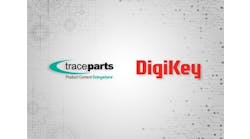Very early in my industrial automation career, I remember sitting at my desk, in a smoky system integrator's office, wondering how to design a control system. I had just received a 10-minute crash course on how to use AutoCAD and was attempting to create some I/O drawings. How the heck did the control designer create the I/O list I was using, and how did he even know where to start designing a control system?
My controls group leader had just received a new project he wanted me to work on. When I read the single paragraph proposal for the project, I was amazed that we even knew how to quote a price to complete the work. It basically said we would provide one mighty fine control system design and hardware for about $50,000. It didn't even reference customer requirements, scope of work or any electrical standards. How do they know how to do that, and where did they start?
A design starts well before your mouse clicks start the process of creating an I/O drawing in your favorite computer-aided design (CAD) application. It should start at the customer, internal or external, before a control designer becomes involved. If not, it can stunt and delay the path to a design while the designer creates free information for the customer, including a problem statement, product and assembly specifications, and requirements documents.
ALSO READ: Go back to basics with HMI design
Details, details, details!
When it comes to design, there is not much that trumps experience, but gathering project details, including a detailed proposal, scope of work and customer requirements, including part drawings, functional design documents and industry standards, certainly help to bring together a successful design. There are many details in these documents, so start out with a project kickoff meeting to review this information and follow it up with design reviews throughout the project. What exactly needs to be done?
A detailed proposal is important to the sales process; it must be usable in the design phase, or why bother writing it? It must give the reader a concept and purpose of the machine, equipment or integration project. Describing all project details noted above is required. If not, it's a budgetary proposal that keeps the customer interested and the rookie designer informed. A proposal must include the deliverables, engineering labor, services and hardware for one mighty fine control system.
A scope of work, either as a standalone document or as part of a detailed proposal, will tell designers and customers where the project starts and where it ends. It must include mention of all labor and design services and hardware supplied. Not only does it help to define the design deliverables, it helps to keep costs under control. If something in a design is clearly out of scope, it's easy to write a change order instead of eating the design costs.
Before starting a design, customer requirements and specifications must exist and be understood, because the design needs to meet or exceed them. It can be a simple thing to select the correct PLC, wire colors or enclosure paint color, if you read the customer's machinery and control system specifications. It's a costly design error if the wrong PLC is specified, if the error is not found until after the control panel has been built and wired. Customer requirements can also complicate a design and programming. For example, you may not be familiar with the customer's PLC of choice, causing wiring changes and use of different programming software.
There is a lot of learning in design It's often a part of it, so download the manuals and read them; and go to training at a vendor's site. They are happy to help you to learn and provide many opportunities to do so, as it helps to reduce the support necessary in the future. Knowledge of the automation hardware available and its application is an important part of design, as well as the proposal, installation and other phases of a project.
Control system design is often a team effort. The control designer and mechanical engineer should meet often. One thing that ties the two disciplines together is a functional design document. This document defines all the main components, subassemblies, processes, sensors and output devices, such as motors, actuators and cylinders on a machine. It can simply be a spreadsheet with descriptions of all the machine inputs and outputs on it, related part numbers and special equipment. It can also be a top view, side view and/or 3D isometric model of the machine with all sensors, actuators and functions labeled or both. A written sequence of operation can be added to these documents.
Knowledge and use of company and industrial standards gets a design off the ground. Things as simple as example electrical drawings and title blocks, wire color and wire label requirements and use of CAD symbols in drawings are important. Find and use the control design standards and CAD standards. The end goal is an electrical drawing set including schematic, pneumatic diagram, panel layout and parts list. Pull together all the information and then start designing.
Lastly, and possibly most importantly, purchase and use NFPA 79: Electrical Standard for Industrial Machinery. This standard is probably the best starting point for an electrical design that protects operators, equipment and facilities from electrical hazards and keeps you from burning down the factory. Get started.






